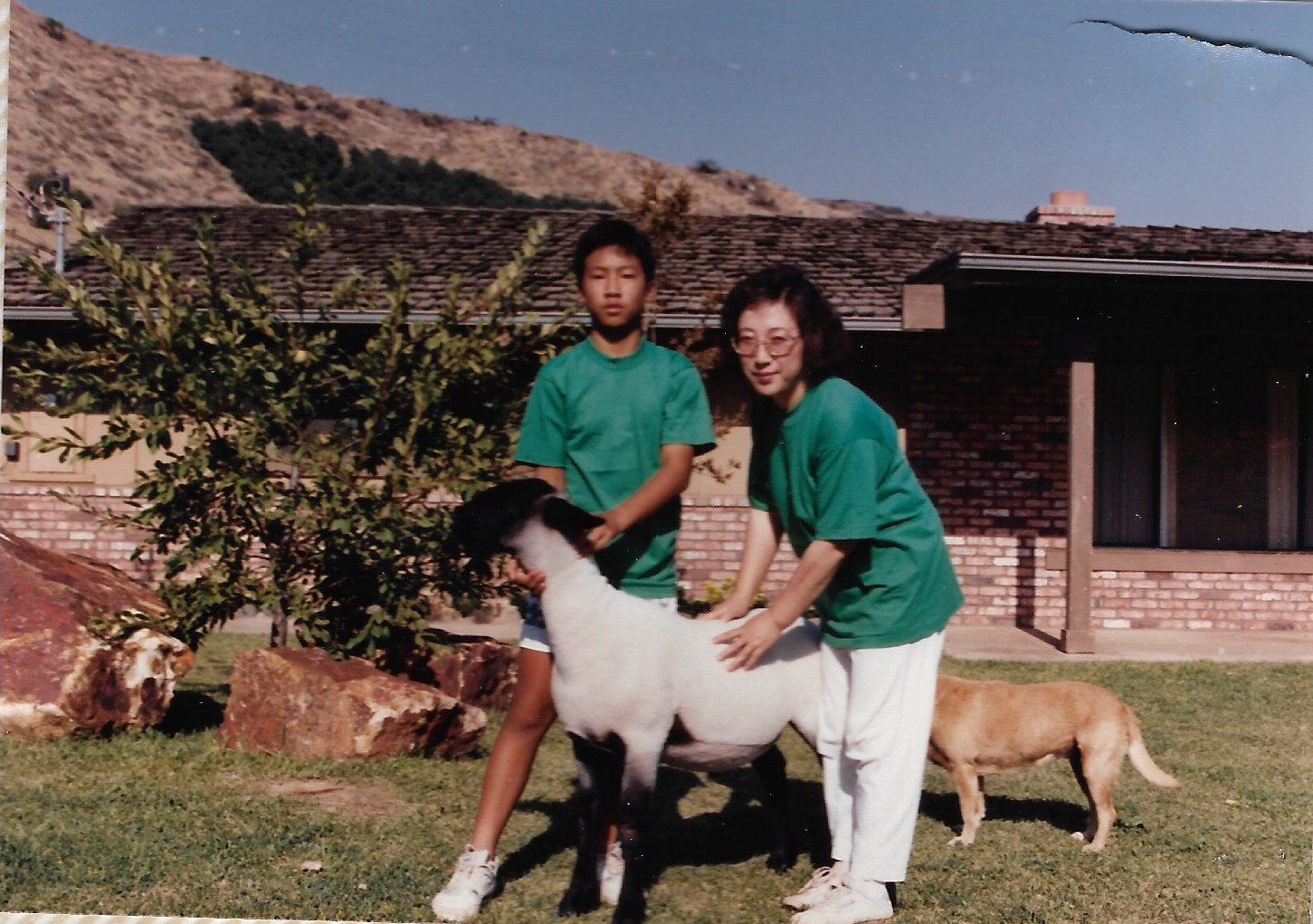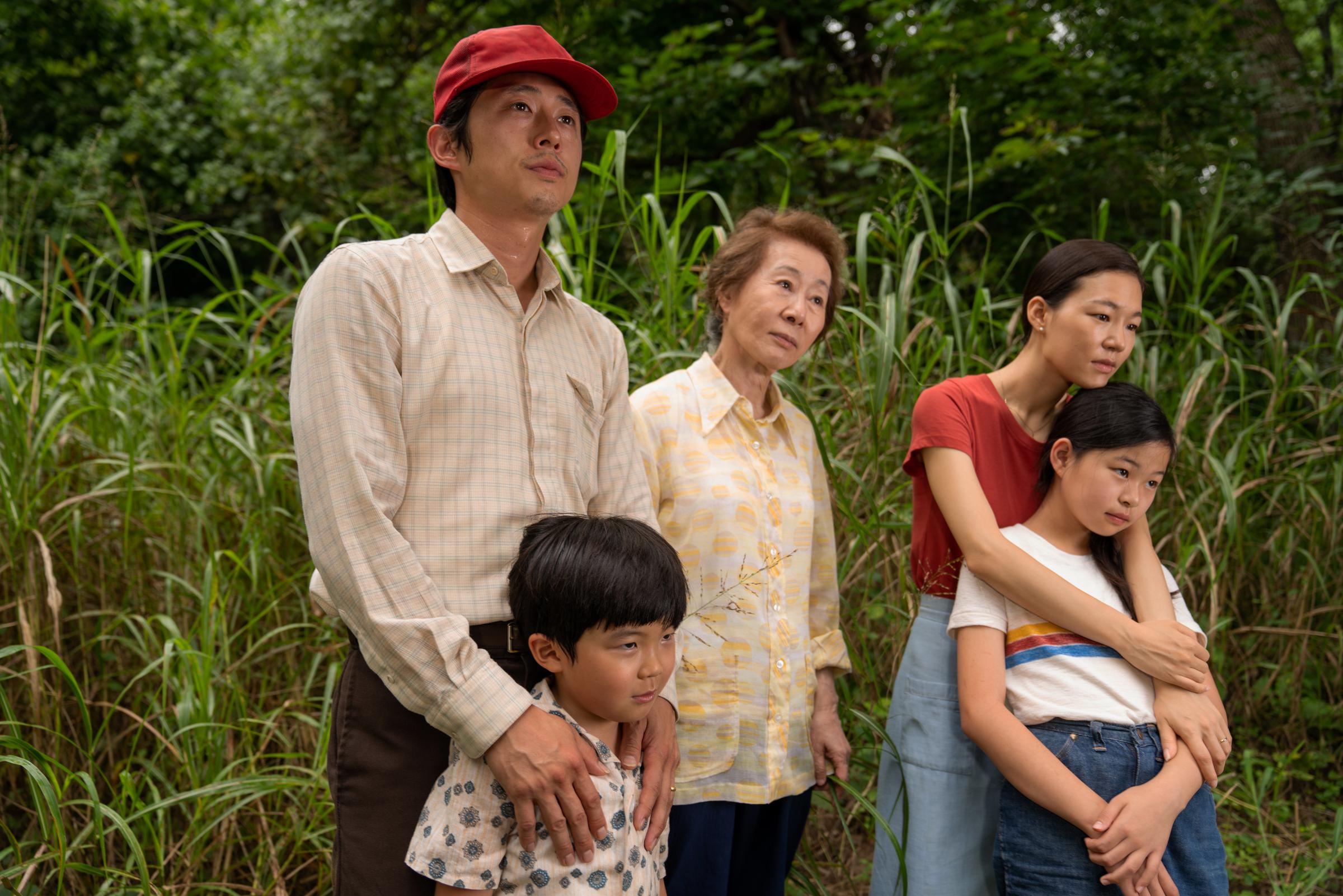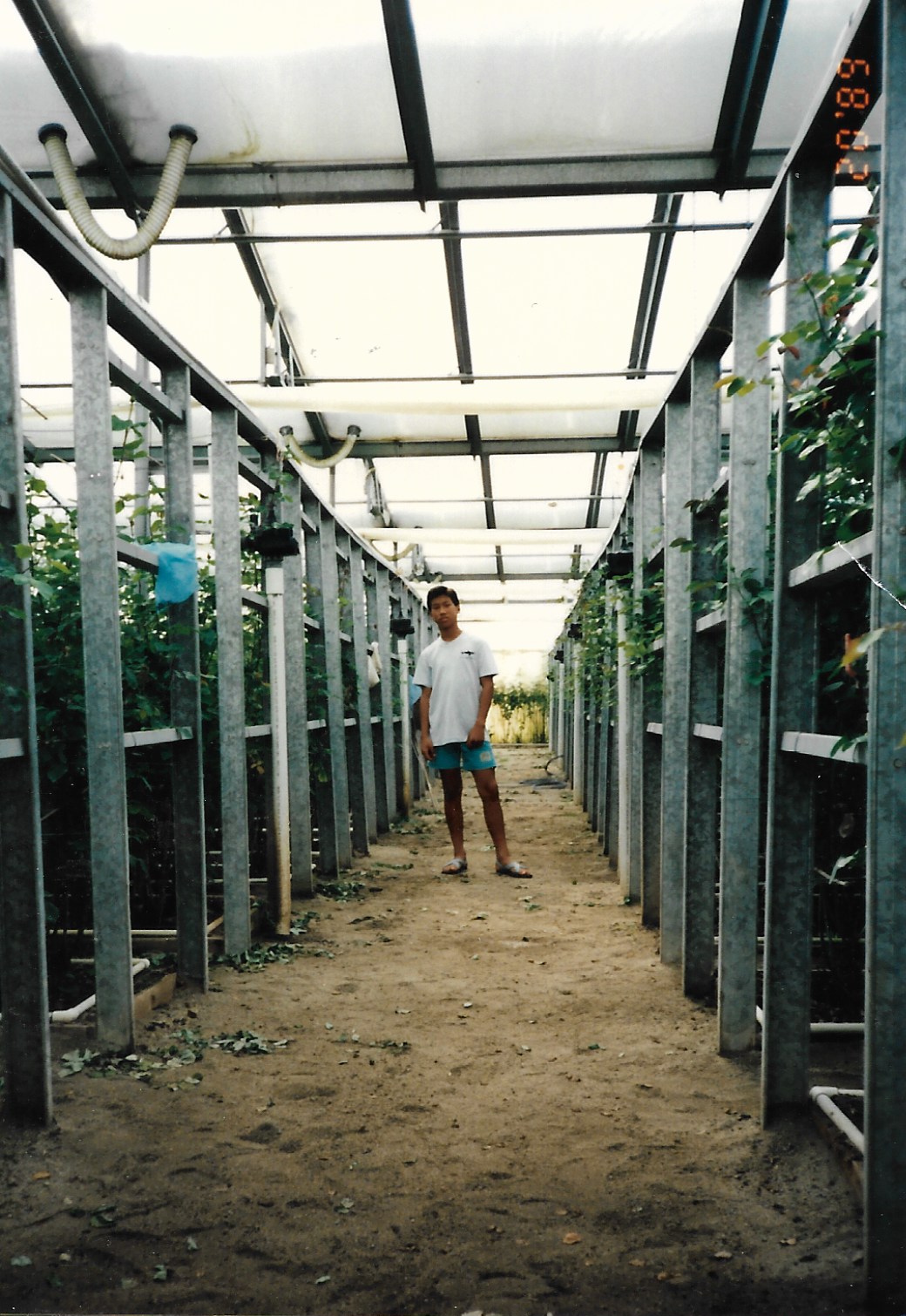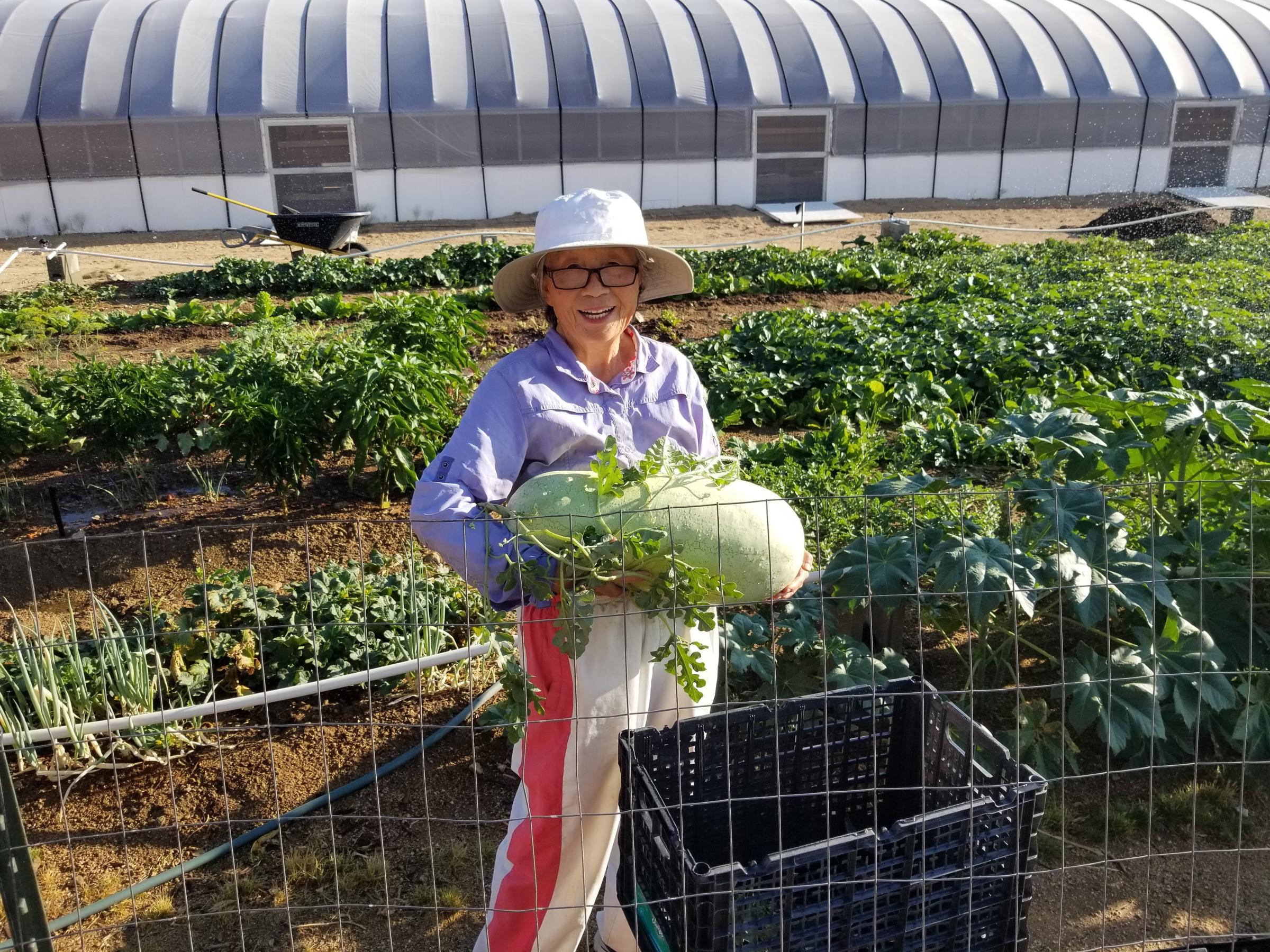
When the filmmaker Lee Isaac Chung began writing a movie based on his childhood as the son of a Korean immigrant farmer in Arkansas, he worried about how it might resonate on a wider level. “I used to not trust that specificity about my own self: I didn’t think it would be interesting to people,” he tells TIME. “I felt like my experiences were so particular and strange.”
Chung’s fears were assuaged when his resulting film, Minari, was widely embraced at early screenings. The film follows Jacob (Steven Yeun) as he starts a family farm in Arkansas and navigates horticultural and personal crises; it won the audience award at Sundance last year and, more recently, was nominated for three SAG Awards, including for the performance of its ensemble cast. In between those accolades, Minari, which arrives in theaters Feb. 12 and on demand Feb. 26, has received acclaim for the way it tackles universal themes like isolation, aspiration and generational divides.
But while Chung has successfully won over a wider audience, his story is also resonating particularly deeply with its subjects: Korean-American farmers and their families. While Chung initially believed his life story to be unique, farming is deeply entwined with the Korean-American experience. “In the early 1900s, farming provided the foundation for the Korean immigrant economy,” Richard Kim, a professor of Asian American Studies at the University of California, Davis, says. “Agriculture was really the only viable form of livelihood for many Asian immigrants during this time period.”
And although most of the Korean immigrants who arrived following the Immigration and Nationality Act of 1965 went into other fields, there are nonetheless many Korean-American farmers who acutely recognize the experiences portrayed in Minari—and until this point, had never seen themselves reflected onscreen with such specificity. “It feels so close to our story that I can’t believe someone made a movie about this,” Joseph Chong, who grew up on a California family farm in the ‘70s and 80s, says.
Before the film’s release, TIME asked several Korean-American farmers to watch the film and reflect on the aspects of it that resonated. Here are their stories, and the history that paved the way for them.

The First Wave
While the biggest Korean-American populations in the U.S. can be found in cities like Los Angeles and New York, the first wave of Korean immigrants were actually farmhands. At the start of the 20th century, the Japanese colonization of Korea had led to widespread oppression and poverty there. At the same time, the U.S. was looking for cheap Asian labor to develop its newest territory, Hawaii, especially due to the fact that Japanese workers there had begun to strike for better wages.
So the U.S. set up a system of indentured servitude, in which they lured Korean workers to Hawaii with promises of “gold dollars blossoming on every bush”—according to Erika Lee’s The Making of Asian America: A History—and then had them work brutally long days on Hawaii’s sugarcane fields to pay off the price of their voyage. Korean workers were paid less than Japanese laborers and complained of being treated “like draft animals.” They were also prevented from seeking better opportunities on the mainland when an executive order targeted at curbing Japanese migration from Hawaii was also applied to Koreans in 1907.
“They worked under an extremely highly regimented system of labor with a great deal of surveillance and oversight, and lived in poor housing conditions,” Kim says. “They were largely held outside of any kind of legal or political safeguards.”
As living conditions in Korea under Japanese rule continued to deteriorate—and as the original contracts of Korean workers in Hawaii ran out—many Koreans found ways to move to California. There, they once again became farmhands, working alongside Mexicans, African-Americans and other Asian immigrants and helping to turn California agriculture into a multimillion-dollar business. Korean communities with working populations popped up in towns like Reedley, Sacramento and Delano. Dong-hoe, or village councils, were organized on plantations, and Korean churches became central to community life.
But anti-Asian sentiment was high in California, with the Japanese and Korean Exclusion League gaining clout and political power. Koreans faced harassment and violence and were refused service in restaurants, public recreation facilities, barbershops and renting houses. They were barred from becoming naturalized citizens—and many states passed Alien Land Laws, making it impossible for Koreans to buy their own farmland and control the means of production.
In the coming decades, the number of Korean and Asian immigrants would stagnate. (During this time, however, Japanese Americans would come to dominate the chick sexing industry, a practice depicted extensively in Minari.) In 1965, President Johnson passed the Immigration and Nationality Act of 1965, partially in response to the Civil Rights Movement. Over the next 20 years, Koreans would flood into the United States by the thousands, peaking in 1987, when 35,849 arrived.
Kim notes that the U.S.’s involvement in the Korean War played a pivotal role in causing this swell in immigration: “It was direct military intervention that produced these dislocations, and which shaped the South Korean regime of authoritarian military dictatorships. These all provided conditions for people seeking to migrate from South Korea,” he says. The vast majority of Korean-Americans living in the U.S. today now consist of post-1965 immigrants and their children.
‘Memories of the Struggle’
Many post-1965 immigrants settled on the coasts, forming Korean-American communities in Los Angeles and Manhattan, where they ran liquor stores or green grocers. (In these positions, they often faced torrents of racist abuse or even boycotts.) But many others harbored rural dreams inspired by those they had in their homeland. In 1971, Yong Chin Chong arrived in California to attend Woodbury University on a student visa; he brought his wife Sun Ok Chong a year later. After graduating, Yong Chin borrowed money from friends to open a liquor mart in Los Angeles.
But after being robbed several times in his store, he decided to instead put his high school agriculture studies to work and move his family, including newborn baby Joseph, to Ontario, Calif., where he bought a 2½-acre plot. Much like Jacob in Minari, Yong Chin hoped to grow Korean vegetables and sell them to the rapidly expanding Korean population in Los Angeles. “I figured that was a path to wealth,” he says in Korean, with his son Joseph translating.
The first few years were rough. Like Minari’s Jacob, Yong Chin agonized over water access; eventually was able to tap into a stream 300 feet below ground. Without any money for additional workers, the couple worked the desolate fields all day, likening themselves to Adam and Eve.
Yong Chin’s wife, Sun, experienced acute loneliness. “There was just land and a house. It was very overwhelming and I didn’t know where to start,” Sun says, also speaking in Korean. “There were many days and nights where I would just be bunching crops and tying them or pulling weeds, and crying to myself.”
The Chungs grew Korean radishes, cabbages for kimchi, zucchini and scallions. They also grew minari, a flavorful green, which made watching the movie especially exciting. “In order to make really good kimchi, you need the cabbage and radish, but you also have to mix in some minari,” Yong Chin explains. “It was kind of essential.”
When Yong Chin and Sun watched the film, Yong Chin said it was “my own story I was seeing.” Joseph says Sun cried a lot, and was particularly jolted by the scene in which Jacob’s wife Monica (Han Ye-ri) opens up a bag full of goodies brought back from Korea. “They both reflected on it a lot and talked for hours after the movie about how it reminded them of that time,” Joseph says. “It brought back a lot of memories of the struggle and the survival and all of that.”
Joseph himself identified deeply with the character David (Alan S. Kim), a young boy who is initially ostracized by the white children around him while also being wary of the seeming strangeness of his Korean grandmother. “I always thought she was raiding our refrigerator,” Joseph says of his own grandmother’s visits. “I was somewhat embarrassed: ‘Why is this woman here? Why is she so different?’ But over time, we realized she really cared for us and our entire family in her own way tried to show us that.”

“It keeps her young”
The same year that the Chongs arrived in California, so did David Paeng and his family. Paeng, now a farmer, was 4 when he touched down with his parents, who hoped for “a better life,” as he puts it. In Pasadena, Paeng’s father took up odd jobs, including serving as a security guard, before starting a business manufacturing furniture parts.
Like Minari’s David and Joseph Chong, Paeng spent his childhood as the only Asian face in some play groups, and he initially struggled to learn the language and connect with his peers. “My mother would tell us a story of when I was outside playing with kids, and I don’t know if they were bullying me or harassing me,” he remembers. “She said, ‘Why didn’t you stand up for yourself?’ I told her, ‘I can’t speak the language. What am I supposed to do?’”
Watching Minari, Paeng says it “resonated 100%.” He laughed—and winced—at the scene in which Jacob orders David to bring him a stick to hit him with, only for the son to present him with a twig: “I’ve done exactly that same thing,” he says. “It seems like that was a common form of punishment in Korea, because I would get switched on the calf a lot.”
And while Paeng worked in dental equipment sales for many years, he recently bought a farm with his mother Ran Hee Paeng, who believed that the opportunity to buy it had arisen from divine influences. David, like Minari’s Monica, initially wanted nothing to do with the farm, but got reluctantly cajoled into the plan: “It was a complete leap of faith,” he says.

Paeng now grows jujubes, a Chinese date which is sold in Asian markets and used in Chinese tea and medicine. And he’s not the only one: he says there’s a whole community of older Korean-American farmers growing jujubes and other Asian crops in the High Desert in Southern California. “They want to get out of the city and live a quiet life: great air, nice weather, cheap land,” he says. “They can invest in a property and plant trees.”
And while Paeng tends to his 1,400 jujube trees, his mother Ran Hee cares for a greenhouse on the property, in which she grows Asian vegetables including perilla leaves, eggplants, zucchinis and Napa cabbage, with which she makes her own kimchi. “She’s like 4‘10”, 80 pounds—but she’ll push wheelbarrows and do everything,” Paeng says. “It really keeps her young.”

Bridging generational gaps
Some 1,700 miles away, on a parcel of land called Peace Village in Robertsville, Mo., a group of Korean women lives together, growing doraji (Bellflower root), gaji (eggplant), cabbages for kimchi and hot peppers. They have been brought there by Pastor Minji Stark, a Korean immigrant who founded the community as a refuge for abandoned Korean women, many of whom married U.S. soldiers who were stationed in Korea before their relationships went awry.
“A lot of Korean women came here 40 years ago when there were not many Koreans around. They had very bad homesickness. Everything was different: the language, the culture,” Stark says. “There were a lot of sad stories.”
Stark herself arrived in 1979 after getting married to a member of the U.S. Air Force who was stationed in Korea; she is one of tens of thousands of women who married American G.I.s following the start of U.S. occupation in Korea in 1945. According to Professor Katharine Moon, who wrote Sex Among Allies: Military Prostitution in U.S.-Korea Relations, possibly 80% of those marriages ended in divorce.
Stark says that eight people now live at Peace Village, and that their harvesting of Korean vegetables helps connect them to their homeland. “When we were very little, before we were married, we remember what our mamas make,” Stark says. “At Peace Village, we try to make that kind. People come and they really enjoy it.”
Stark loved the movie. She said it brought back many memories of her mother, who, like Minari’s Soonja (Yuh-jung Youn), came to live with her daughter to take care of her grandchildren. She remembered her mother and children trying to bridge cultural gaps in those days: her two-year-old daughter and grandmother teaching each other how to count in each other’s language by pointing at their fingers; her son trying to explain to his grandmother the concept of pancakes.
Coincidentally, Stark said her mother, like Minari’s Soonja, accidentally set a huge fire where they lived while trying to help out around the yard. “She tried to burn the leaves—it was really windy, so it went further, further, further. When I got home, there were four fire department trucks,” Stark remembers. “My mother almost had a heart attack, she was so scared.”
“We are a part of this American landscape”
While Minji Stark and David and Ran Hee Paeng continue to seed their plots, so do thousands of other Korean-American and Asian-American farmers across the U.S. There are clusters of Hmong-American farmers in Wisconsin; Laotian-American and Punjabi-American farmers in California’s Central Valley; Vietnamese-American farmers near New Orleans. Many of them are connected by the Asian American Farmers Alliance, which aims to share education and fight for policy change.
Earlier this year, Minari’s studio A24 reached out to Mai Nguyen, who founded the alliance, about organizing an advance screening for her group. When she announced the screening, excitement was so high that the allotted 200 virtual tickets were all claimed within 48 hours. In the end, A24 admitted 300 people into the screening, and Nguyen says her phone exploded afterward with excited responses. “If you scroll through my text messages, it’s just a bunch of all-caps ‘WOWs’ and crying emojis,” she says. “Everybody was just stunned by how poignant and beautiful this film was.”
Nguyen says that in the wake of the screening, a staff member of the United States Department of Agriculture reached out to her “to better understand Asian American farmer needs.” She says the film is especially powerful in a year in which anti-Asian violence has soared. Stigma against Asian farmers is far from ancient history: just five years ago, for example, the Tea Party Patriots ran a campaign ad supporting now-Senator Josh Hawley in which a menacing Chinese businessman buys up Missouri farmland. The title of the ad on YouTube is “Stop Helping the Chinese Buy Our Farms.”
“We are still considered foreigners,” Nguyen says. “But we are a part of this American landscape and we have been: we have become enmeshed in and helped build this society. I think it’s really important for people to see us.”
More Must-Reads from TIME
- Cybersecurity Experts Are Sounding the Alarm on DOGE
- Meet the 2025 Women of the Year
- The Harsh Truth About Disability Inclusion
- Why Do More Young Adults Have Cancer?
- Colman Domingo Leads With Radical Love
- How to Get Better at Doing Things Alone
- Michelle Zauner Stares Down the Darkness
Contact us at letters@time.com